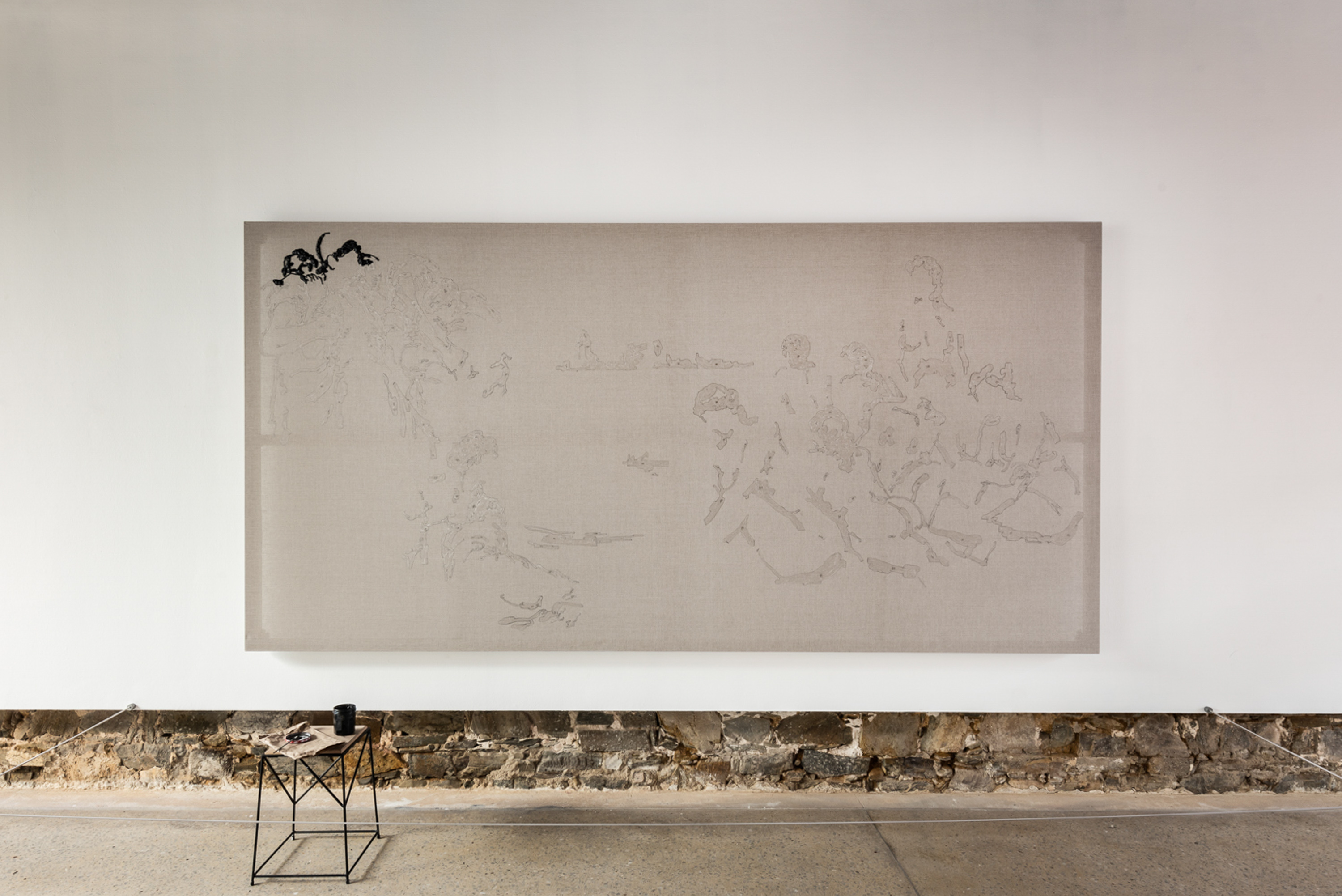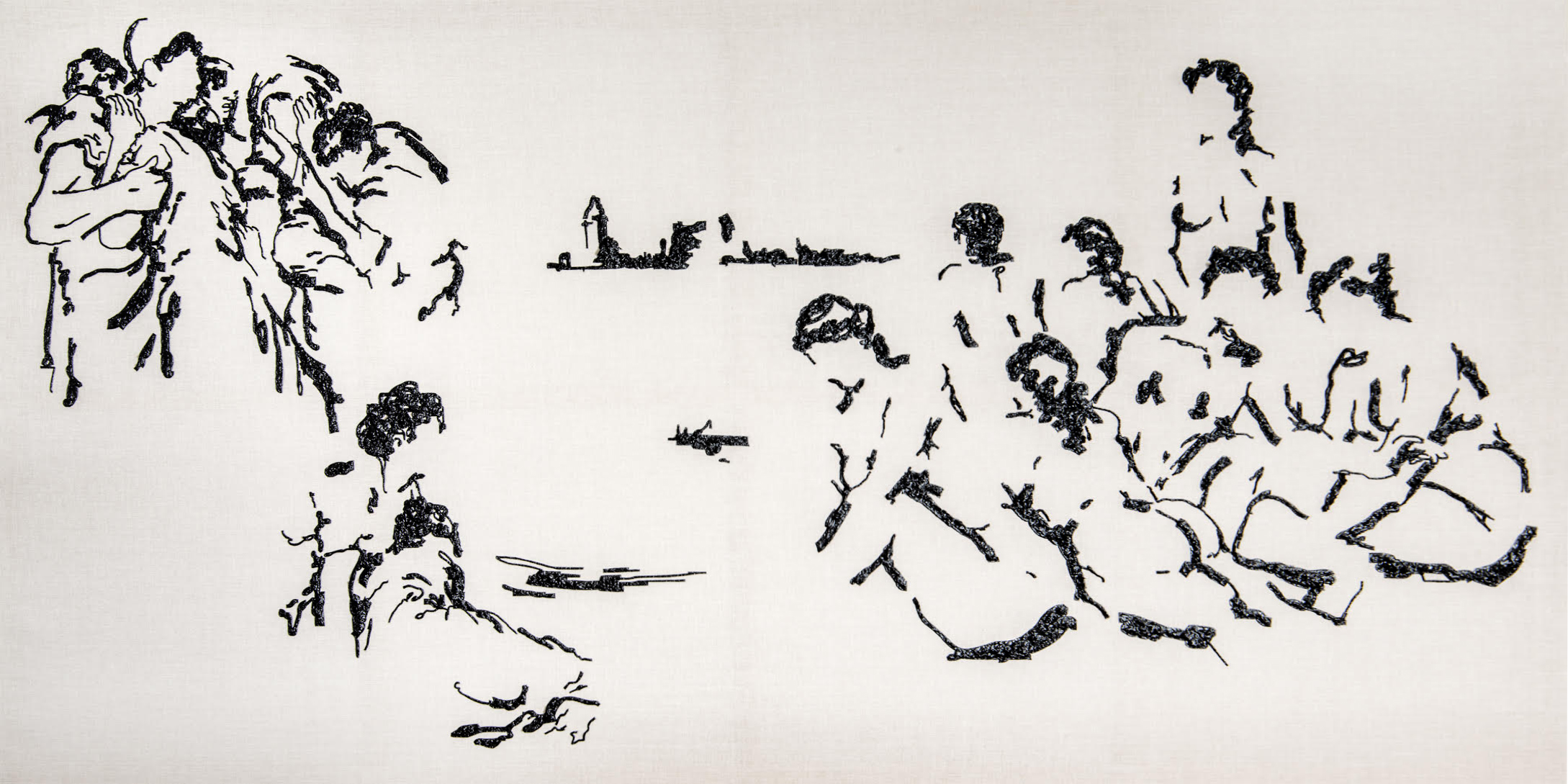
An oil painting on raw linen, with four layers of priming under the sections that will receive paint. Black oil paint is applied in a single layer of thick impasto.
The work was exhibited unfinished and worked on throughout the duration of exhibition.

The painting is a remake of two classic paintings of strikingly similar composition – Frederic Lord Leighton’s Hercules Wrestling with Death for the Body of Alcestis, c.1871 and Paul Cézanne's The Large Bathers, 1905 – notable for their stark difference in subject and mood. The left side features Leighton’s panicked spectators facing Cézanne’s lounging bathers on the right.

Matthew Freemantle, on Hercules Wrestling with Death for the Large Bathers:
“Throughout the show, Lawrence will be otherwise active in the space, working on his largest canvas to date, the 1.75m x 3.5m Hercules Wrestling with Death for the Large Bathers in situ. These elements of his normal life—the painting, the bathing—help to set the show in a state of flux, placing artmaking as a functional part of the everyday. Here Lawrence draws from German artist Joseph Beuys, who considered art much broader than painting, sculpting and exhibiting. For Beuys, as for Lawrence, the impulse to create is seen as a basic component of human life.
“Completeness and incompleteness coexist. We are never finished. Our routines become rituals and our rituals can degenerate into routines. Art is a form of distilling reality, where grand intentions and everyday mundanities are the subjects—with sometimes overwhelming and sometimes underwhelming results.”
Hercules is Lawrence’s playful tracing of a mashup of two classic scenes with similar compositions by Frederic Lord Leighton and Paul Cézanne. Leighton’s horrified characters, Cezanne’s indifferent bathers and finally Lawrence’s cursory retelling of these stories probes at how the function of art has changed. Art used to need to capture critical and epic moments, later just moments. What do we ask of it now?”